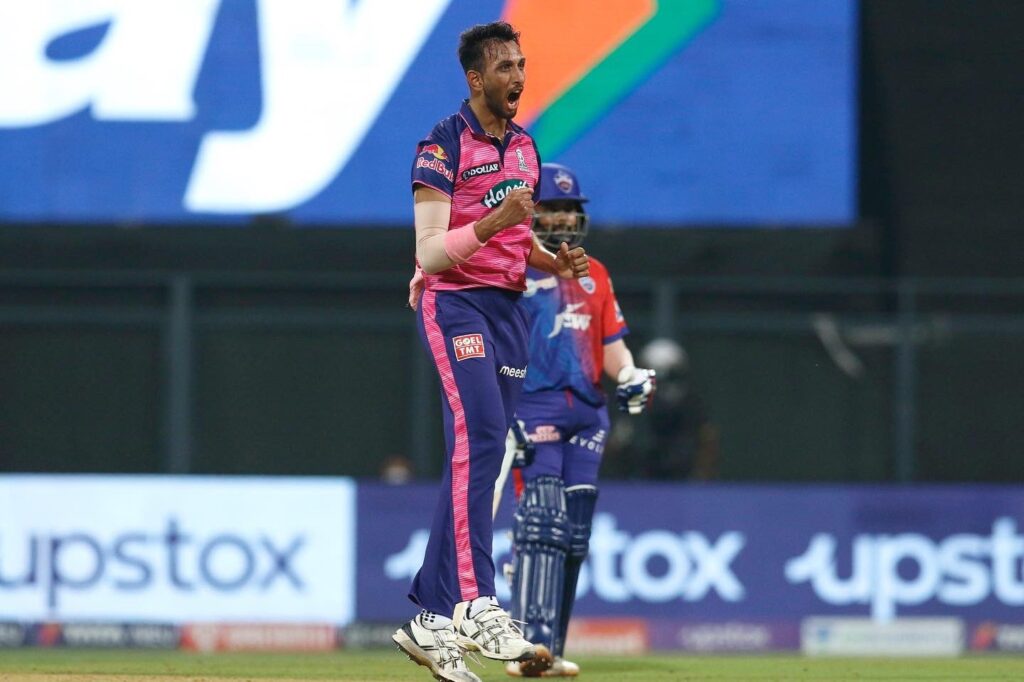
Prasidh Krishna, a strapping fast bowler who had all but kissed his World Cup dreams goodbye after suffering a lower-back injury during a tour of Zimbabwe last year, will want to show that he is battle-ready and can help India’s pace-bowling attack retain the aura that it has acquired as the most potent at this World Cup.
The news that Hardik Pandya would not be fit in time to play any further part in India’s campaign was a massive blow for the team. They will have to take that on the chin and get ready for the big battles ahead – Sunday’s game at Eden Gardens against South Africa, to decide who tops the table, and the semifinal.
Within moments of the news of Pandya’s exit from tournament breaking, questions were being asked by connoisseurs and fans alike, if Krishna was the right choice as replacement. Why did the selectors not plump for a like-for-like substitution when it became apparent that the wait for Pandya’s return would extend beyond the World Cup?
Deepak Chahar would have been the ideal choice, but he has had a five month lay-off and just returned to Twenty20 cricket for Rajasthan last month. Vijay Shankar, Shivam Dube and Venkatesh Iyer are other names that might have come up for consideration, but they cannot be spoken of as being in the same league as Pandya.
Yes, the decision is a tacit admission of the absence of quality seam-bowling all-rounders in the country. But the think-tank has left the task of worrying about the absence of a like-for-like replacement to the critics and fans. The team management and successive selection panels seem to have agreed that the focus would be on backing the specialists to deliver the goods.
Just as they have done in the World Cup so far.
Virat Kohli and Rohit Sharma, the skipper, have led the batting with more than 400 runs apiece so far. KL Rahul, Shreyas Iyer and Shubman Gill have accounted for five half-centuries, and the batting has done its job in complementing the work of the bowling unit. The spinners, Kuldeep Yadav and Ravindra Jadeja, have not been left behind, accounting for 19 wickets between them.
However, it is clear that Krishna has been roped in as a back-up option for the seam-bowling trio of Jasprit Bumrah, Mohammed Siraj and Mohammed Shami. With Shardul Thakur, who can bat better than any of the specialist bowlers, already in the squad, India may not have felt compelled to look for an all-rounder to replace Pandya.
By giving Krishna game time in an Asia Cup match in Sri Lanka in August and in two matches against Australia in September, the selectors and team management had already indicated that he would be in the mix as a back-up seam-bowling option. By all accounts, therefore, their decision is consistent with their planning in the run-up to the World Cup.
Look at it from another perspective. Should one of the three fast bowlers who have claimed 38 wickets among them suffer an injury during a game, Krishna is now available to replace that individual as a substitute. Of course, Shardul is already in the squad, but he is not quite the express bowler that Bumrah, Siraj and Shami can be.
There is a specialist batter in Ishan Kishan, India’s only left-hand option for the top order, and a spinner of the quality of R Ashwin in the squad in case they are needed to step up in an emergency. But India needed a pace bowler in the dressing room, and the selectors’ choice of Krishna comes across as a well-thought out one.
While there is little the team management can do about the lack of seam-bowling all-rounders of Pandya’s quality, the Board of Control for Cricket in India (BCCI) must encourage players to develop skills beyond their primary specialisation. The importance of such cricketers is never more keenly felt than when a Pandya is lost to a freak injury.
There is already some criticism that the Impact Player rule in the Indian Premier League (IPL) is making all-rounders somewhat redundant and unfashionable. And this could have an impact on the evolution of all-rounders in Indian cricket in the long term. It is for the BCCI to find ways to convey to the multi-dimensional players that they remain central to plans.
And while the BCCI, its selectors and other visionaries try and find a solution to that, Rohit and Rahul Dravid, the coach, will hope that no more players get injured before the end of the World Cup. The team management will draw confidence from the success they’ve enjoyed in the three games since losing Pandya to a freak mishap. With a match against Netherlands to end the league phase, Krishna could even get some game time before the knockout matches commence.



